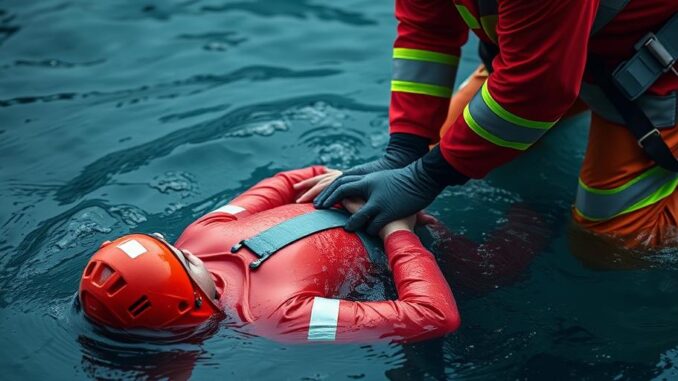
Summary
This article examines the persistent threat of pediatric drowning in the US, analyzes prehospital predictors of critical illness, and reviews the latest advancements in drowning resuscitation guidelines. It emphasizes the importance of prevention, rapid response, and appropriate care to improve outcomes. The insights provided aim to equip caregivers, first responders, and healthcare professionals with the knowledge to combat this preventable tragedy.
TrueNAS: the healthcare storage solution thats secure, scalable, and surprisingly affordable.
** Main Story**
The Silent Threat: Pediatric Drowning in the United States
Drowning remains a significant public health concern in the United States, particularly for children. It stands as the leading cause of death for children aged 1-4 and the second leading cause of unintentional injury-related death for children aged 5-14. Tragically, an average of 11 children drown every day in the US, a statistic that underscores the urgency of prevention efforts.
Prehospital Predictors of Critical Illness: A Deeper Dive
Recent research employing national EMS data has shed light on prehospital predictors of critical illness following a drowning incident. These predictors include male sex, younger age, and nonurban locations. This information is crucial for prehospital and emergency department preparedness, allowing for more effective resource allocation and potentially improving outcomes. For instance, recognizing that young boys in nonurban areas are at higher risk can inform targeted prevention programs and enhance prehospital response protocols.
Racial and Socioeconomic Disparities
Drowning rates are not uniform across all demographics. Stark disparities exist, with Black children and American Indian/Alaska Native children experiencing significantly higher drowning rates compared to their White counterparts. Furthermore, children from lower-income households are more likely to have limited or no swimming skills, increasing their vulnerability. These disparities highlight the need for targeted interventions focusing on these at-risk populations. Community-based swimming programs, increased access to water safety education, and culturally sensitive outreach are crucial components of a comprehensive drowning prevention strategy.
Advancements in Drowning Resuscitation
The American Academy of Pediatrics (AAP) and the American Heart Association (AHA) recently updated their guidelines on resuscitation following drowning. These guidelines emphasize the critical role of rescue breaths in CPR for all drowning victims in cardiac arrest. The rationale behind this recommendation lies in the fact that drowning primarily causes respiratory arrest due to submersion-related hypoxia, which can quickly progress to cardiac arrest. Therefore, restoring breathing is paramount in drowning resuscitation.
The Drowning Chain of Survival
The updated guidelines also stress the importance of the “Drowning Chain of Survival,” a five-step approach to maximizing survival rates:
- Prevention: Implementing barriers such as pool fencing, close supervision of children around water, and teaching children swimming skills are essential preventative measures.
- Recognition of Distress: Recognizing the signs of aquatic distress and promptly calling for help can make a significant difference in outcomes.
- Flotation: Providing flotation devices to prevent submersion can buy valuable time until rescuers arrive.
- Removal from Water: Safely removing the person from the water is the next critical step.
- Provision of Care: Providing appropriate care, including CPR with rescue breaths and, if available, supplemental oxygen, is essential until advanced life support arrives.
Prehospital Care: Optimizing the Response
The first few minutes following a drowning incident are critical. Prehospital care plays a vital role in determining patient outcomes. Bystanders should immediately call 911 and, if trained, initiate CPR with rescue breaths. Early oxygen administration by trained rescuers is also crucial in addressing the severe hypoxemia that characterizes drowning.
Beyond the Immediate Response: Long-Term Considerations
While immediate resuscitation is the initial priority, long-term care and rehabilitation are equally important for drowning survivors. Some individuals may experience neurological damage due to oxygen deprivation, requiring ongoing medical attention and therapy. The extent of recovery varies greatly depending on the severity and duration of submersion.
Conclusion: A Multifaceted Approach
Addressing the complex issue of pediatric drowning requires a multifaceted approach. By focusing on prevention strategies, improving prehospital care, adhering to the updated resuscitation guidelines, and addressing racial and socioeconomic disparities, we can collectively strive to reduce the incidence of these preventable tragedies and improve outcomes for drowning survivors.


The Chain of Survival is a great framework! Perhaps we should add a sixth link: mandatory inflatable unicorn rentals at all aquatic facilities? Think of the visibility! Less chance of distress going unnoticed, plus…unicorns.
That’s a wonderfully creative suggestion! Inflatable unicorns would certainly add a layer of fun and visibility. Perhaps a portion of the rental fees could be directed toward providing swimming lessons for children in underserved communities. Addressing disparities while enjoying a unicorn ride sounds like a win-win!
Editor: MedTechNews.Uk
Thank you to our Sponsor Esdebe
A sobering read, but important. Given the disparities highlighted, perhaps alongside swimming programs we could also explore culturally-specific water safety education? Adapting the message to resonate with different communities could make a real difference.
Thank you for your insightful comment! You’re spot on – culturally-specific water safety education is vital. Tailoring the message to resonate with different communities is key to effective prevention. Perhaps incorporating trusted community leaders in the education process would amplify the message and increase engagement.
Editor: MedTechNews.Uk
Thank you to our Sponsor Esdebe